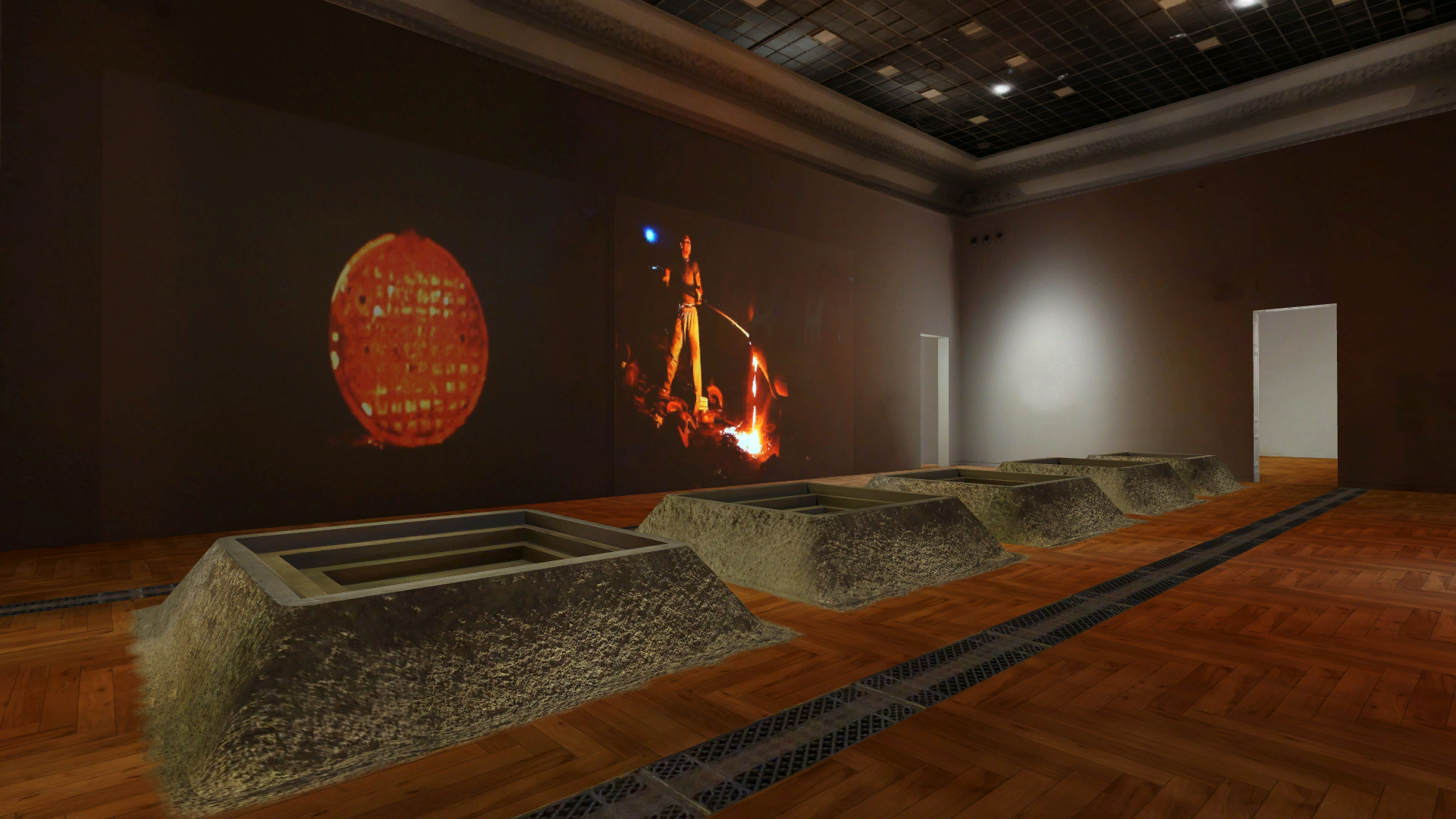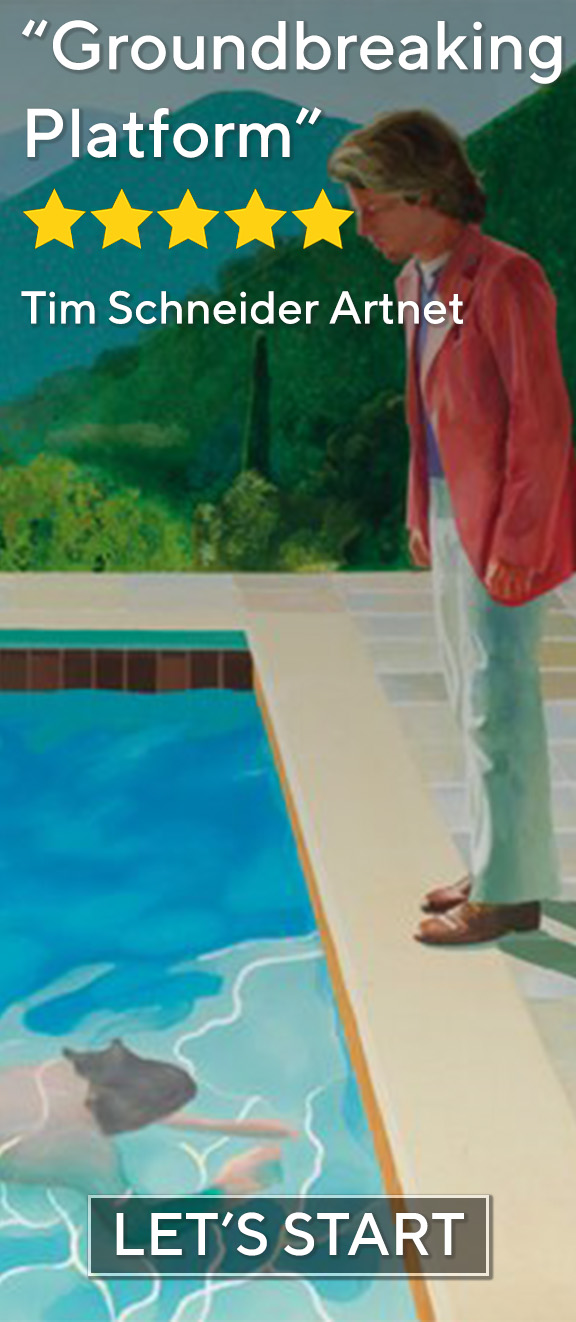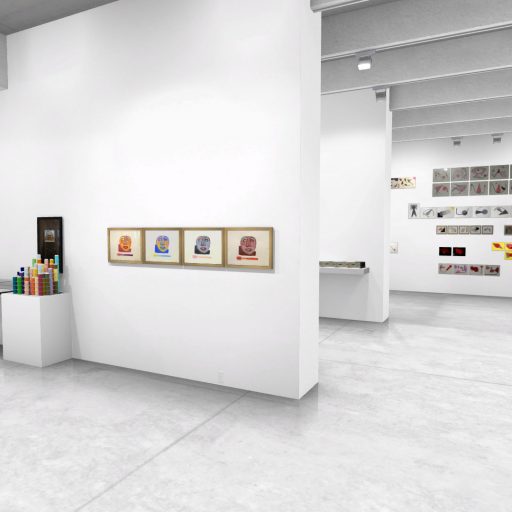

The exhibition, constructed in relation to the architecture of Zachęta, gives the viewer an insight into the artist’s practices and enables them to experience its spatial aspects. Knowledge and multisensory experiences come together in the arresting, multi-layered message.
Located in the Matejko Room is the monumental installation What the Barbarians did not do, did the Barberini, made of five sand mastaba-like forms, replication of coffers from the Pantheon in Rome. As they are located on the floor, we are able to see deformations, which, thanks to optical illusion, give the interior of the copula a harmonious form. Projected on the walls are scenes of sand casting of utilitarian forms made of bronze alloy, formed using metals taken from battlefields of Iraq. Hiwa K reminds us how the solid matter circulates between the fields of culture and war.
War is the very origin and bonding material of Hiwa K’s art, because it is war that forced him to undertake a dramatic journey on foot to Europe, full of dramatic shifts. In the video works gathered in the Narutowicz Room, the artist puts us into situations that resemble those of his own. His personal history is presented via fictionalised narratives, activities and riddles made into house-like maze in which the viewer may experience crampedness, anxiety and discomfort. The artist leads us from prisons and shelters, through ruins of bombarded cities to Europe, with all its material heritage and problematics of the public space.
In his practice, Hiwa K sketches fault lines, discontinuities and unexpected forms between the poetic and the political. Deeply interested in geopolitics and economy that shaped his own condition as a refugee and eventually the citizen of country other than his own, he has chosen to address political matters indirectly or, as he says, to point at them not with the index finger but with a pinky instead. That is why we — the public, the participants, the bystanders — arrive at the understanding of timely matters while not being instructed or controlled.
Hiwa K — an visual artist working and living in Berlin. Originally from Kurdistan of Iraq, he fled the country in 1996, eventually settling in Germany where he obtained his formal education in visual arts. He is an accomplished flamenco guitarist who studied under master Paco Peña and continues his musical practice parallel to visual arts. Hiwa K’s work has been shown in major group exhibitions such as documenta 14, Athens and Kassel (2017); 56th Biennale di Venezia (2015); La Triennale, Intense Proximity, Paris (2012) among others. He also took part in most editions of Alternativa festival in Gdańsk (2009–2016). His last individual exhibitions were in Kunstverein Hannover (2018), S.M.A.K. Ghent (2018), New Museum in New York City (2018), and KunstWerke Berlin (2017). Hiwa K have worked with curator Aneta Szyłak since 2005. In 2008, the duo initiated Estrangement, a series of workshops, explorations and discussions in Kurdistan, the outcomes of which were exhibited at The Showroom in London (2010) and in the framework of Alternativa festival in Gdańsk (2011). The artists is a recipient of Arnold-Bode-Preis (2016) oraz Ernst Schering Preis (2017).
Aneta Szyłak is a curator and writer, recently responsible for the making of NOMUS — New Art Museum in Gdańsk. Since 2005 she works collaboratively with artist Hiwa K. She worked as founding director of Wyspa Institute of Art (2004−2014) and Centre for Contemporary Art Łaźnia (1998−2001). In years 2009–2016 she was also an artistic director of Alternativa — International Visual Arts Festival. Curated and co-curated exhibitions Slaveness (2018); Damage and Loss (2016); Vernacularity (2015); Everydayness (2014); Hito Steyerl: Abstract (2014); Oliver Ressler: Political Imaginaries — Making the World Anew (2014); The Field is to the Sky, Only Backwards (2013); Buildings and Remnants (2012); Labour and Leisure (2011), Estrangement (2011, 2010). Curating Context — the Palimpsest on the Quotidian and the Curatorial is her PhD project at Goldsmiths, London and University of Copenhagen.










